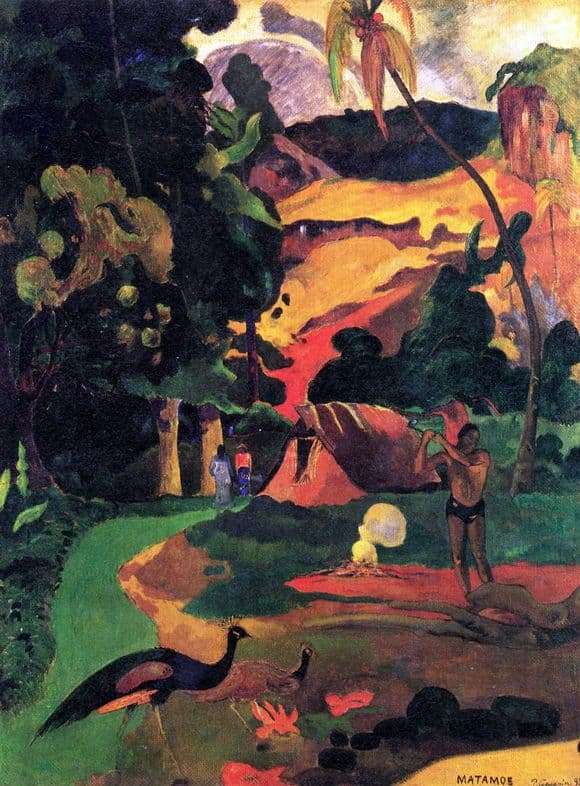
It is easy to guess that the painting “Yellow Christ” keeps a religious overtones. However, both society and critics disagree – whether it was a challenge to the clergy and the whole Christian world or a desperate call to cast off a veil of indifference.
The central place of the composition is the traditional plot of the crucified Christ. Jesus is surrounded by Breton landscape and peasants. It seems no one else notices the suffering of the Son of God, his torment and sacrifice made in the name of the salvation of mankind. People are indifferent, doing their daily activities.
The effect of indifference only enhances the unusual color solution. The main role in coloring is given to bright yellow shades. These are endless solar fields and – oddly enough – Jesus himself. Such a technique blurs the “boundaries” between the protagonist of the picture and the background.
While the canvas must clearly demonstrate the discrepancy between the characters, the author purposely emphasizes the detachment of people. It is as if Christ remains invisible, he is completely ignored, and life goes on as usual.
It is also interesting that yellow is a frequent symbol of the wisdom of the spirit, holiness and divine blessing. It resembles frozen sunlight, which warms and gives life. This interpretation creates an additional conflict with the plot of the picture, puzzling and makes you wonder.
Works on religion and faith are rare in Gauguin. But obviously, when the author takes on such a canvas, he has something to say. The artist uses unconventional techniques, innovation and symbolism. Such an approach cannot but cause a backlash. Is this not the main goal of art – to convey your thoughts and experiences, to bring them to people and at least a little to try to change the world for the better?
Description of the painting by Paul Gauguin “Yellow Christ”







